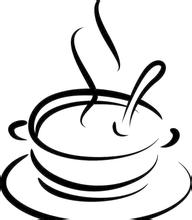Excellent taste of Kona Coffee from the Manoa Valley in Oahu, Hawaii, USA.

The climate is very suitable, the sun in the morning gently passes through the air full of water vapor, in the afternoon, the mountains will become more humid and foggy, and the white clouds surging in the air are natural umbrellas for coffee trees, and the evening will become sunny and cool. Because of the suitable natural conditions, the average yield of Kona coffee is very high, reaching 2240 kg per hectare, while the yield of coffee in Latin America is only 600 kg to 900 kg per hectare.
Kona coffee is grown without shelter, and Hawaii has an island climate, often with a dark cloud, resulting in a shading effect. Coffee farmers in Hawaii usually keep their farms quite clean, and the fertile land, coupled with the fine management of farmers, is suitable for the climate in which coffee grows. Kona Coffee has become a boutique coffee on the market. [1]
Cover factor editing
Environmental requirements
Kona coffee
Kona Coffee (10)
Soil: fertile tropical Hawaiian volcanic soil that provides the dense nutrients of the Kona Coffee Tree.
Altitude: the appropriate altitude of 2100 to 3600 meters and the cool moonlight promote the fruit of Kona Coffee to ripen slowly and create an excellent taste with rich appearance and full moisture.
Rizhao: the warm tropical sun plays an important role in the reproduction of coffee trees. Hawaii provides the morning light that Kona Coffee needs.
Cloud cover: due to the rise of clouds at noon, the severe direct sunlight is ensured and stopped.
Rainfall: cloud cover brought enough Rain Water to make coffee after a morning sun, eager to enjoy the moisturizing baptism of Rain Water in the afternoon
Hawaii is a paradise for tasting and buying coffee. Each island has several unique places for tourists and local residents to taste and buy coffee, including comfortable and warm shops and comprehensive centers to introduce coffee knowledge. In Hawaii, you can watch the fiery sunset sink into the red-orange sea, feel the fresh air filled with the scent of flowers, and sit by the sea and drink a cup of coffee. I'm afraid there is no place in the world that can offer you such enjoyment.
In 1813, a Spaniard first grew coffee in the ManoaValley Valley of Oahu, which is today the main campus of the University of Hawaii. In 1825, an English agronomist named John Wilkinson transplanted some coffee from Brazil to grow in the coffee garden of Chief Birch on the island of Oahu. Three years later, an American missionary named Samuel Riveland Rags brought the branches of the coffee tree from Birch Emirates Garden to Kona, a descendant of the Arabica coffee tree that first grew on the Ethiopian plateau. To this day, Kona Coffee still carries on its noble and ancient lineage.
Growing environment
The quality of the fine Kona coffee is suitable for the right geographical location and climate. Coffee trees grow on the slopes of volcanoes, and their geographical location ensures the altitude needed for coffee to grow; the dark volcanic ash soil provides the necessary minerals for coffee. This is probably due to the fact that Kona Island is rich in volcanic black mud with moderate acidity, rich mineral content and suitable water content. And every afternoon, a cloud floats over the island of Kona to block out the sun to protect fragile coffee saplings.
Important Notice :
前街咖啡 FrontStreet Coffee has moved to new addredd:
FrontStreet Coffee Address: 315,Donghua East Road,GuangZhou
Tel:020 38364473
- Prev

A brief introduction to the taste and aroma of mellow Dominica boutique coffee beans
Carefully selected in this way, the high-quality Dominican coffee exudes a faint aroma and gives people a faint fruity aroma with a lingering finish and a smooth and smooth finish. Dominica coffee beans (Caribbean) Dominica coffee is grown in highlands and lowlands, and its taste is slightly different. The upland is sour, but the taste is rich; the lowland is less sour.
- Next

A brief introduction to the taste and aroma of Dominica boutique coffee Santo Domingo coffee producing area
In 1982, agricultural output accounted for 17.8 percent of the GDP, and arable land accounted for 25.4 percent of the total land area. Agricultural production is dominated by cash crops such as sugar cane, coffee, cocoa and tobacco. Among them, the planting area and output value of sugarcane accounted for 1% of the cultivated land area and 30% of the total agricultural output value, respectively. 9.629 million tons of sugarcane were produced in 1981, mainly distributed in the Siwao lowlands and Siwao lowlands.
Related
- Detailed explanation of Jadeite planting Land in Panamanian Jadeite Manor introduction to the grading system of Jadeite competitive bidding, Red bid, Green bid and Rose Summer
- Story of Coffee planting in Brenka region of Costa Rica Stonehenge Manor anaerobic heavy honey treatment of flavor mouth
- What's on the barrel of Blue Mountain Coffee beans?
- Can American coffee also pull flowers? How to use hot American style to pull out a good-looking pattern?
- Can you make a cold extract with coffee beans? What is the right proportion for cold-extracted coffee formula?
- Indonesian PWN Gold Mandrine Coffee Origin Features Flavor How to Chong? Mandolin coffee is American.
- A brief introduction to the flavor characteristics of Brazilian yellow bourbon coffee beans
- What is the effect of different water quality on the flavor of cold-extracted coffee? What kind of water is best for brewing coffee?
- Why do you think of Rose Summer whenever you mention Panamanian coffee?
- Introduction to the characteristics of authentic blue mountain coffee bean producing areas? What is the CIB Coffee Authority in Jamaica?

